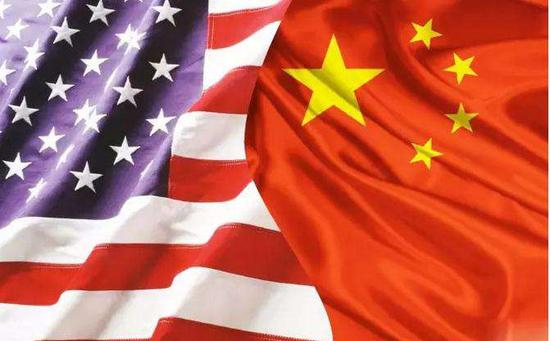If you want to effectively reduce the US trade deficit with China, the electronics industry seems to be the most obvious choice. Taking into account more obvious political and other factors, the industries that are more affected include auto parts, home appliances, furniture, electronic products, and supporting packaging and printing industries for these industries.
The world-renowned "Xi special meeting" closed, and a piece of information that attracted much attention from the manufacturing industry was announced. According to the White House website, US Secretary of Commerce Wilbur Ross announced a "Hundred Day Plan" on Friday (April 7, 2017), that is, China and the United States will start a 100-day meeting on trade.
It is reported that the main goal of the "Hundred Days Plan" is to increase US exports to China and reduce the bilateral trade deficit of up to RMB 2.400 billion. Ross also revealed that China has expressed interest in reducing the trade surplus due to its impact on inflation and money supply.
On the background of the China-US "Hundred-Day Trade Plan"
Before Trump's visit to China, he mentioned the issue of the Sino-US trade deficit, which may also make the Chinese government "prepared to leave." Judging from the information disclosed in the White House briefing, there may be a "100-day trade plan" between China and the United States to reduce the trade imbalance between China and the United States. At the end of 2016, we analyzed the possibility of a Sino-US trade war, including the status quo of Sino-US trade.

The trade between China and the United States has the following characteristics:
1) Complementarity is greater than competition. China exports more light industrial consumer goods while importing more technology products and capital goods. There is a certain degree of complementarity in trade between China and the United States, which is even worse with Japan-US trade when the Japan-US trade war broke out in the early 1980s. Most of the competition is fundamentally different;
2) The trade deficit between China and the United States is relatively large, but it is mainly caused by the imbalance of capital goods items such as mechanical and electrical products.
We expect that possible measures of the Hundred-Day Trade Plan include:
1) China requires the United States to relax export restrictions, especially in high-tech related fields;
2) China expands imports of agricultural products and other related fields from the United States;
3) China adjusts import tariffs on certain categories to reduce the cost of imports and promote imports;
4) China and the U.S. mutually open up investment areas, relax investment restrictions, and so on. In addition, we must also realize that the trade imbalance between China and the United States is not formed in a day, and it is also closely related to the division of labor in the global economy. It cannot be changed in a short period of time by the "Hundred-Day Trade Plan".
Keywords of the Hundred-Day Plan: "Reducing the trade surplus"
Where is the key word of the "Hundred-Day Plan" is that China wants to "cut the trade surplus." After watching the economy for so long, I have never heard of any country that is “interested” in reducing its trade surplus. The trade surplus of the Qing Dynasty drew out the money in Britain's pockets and forced the British devils to set sail. Defeat and victory is another matter. At least no country dislikes a surplus but prefers a deficit—the same is true of the United States.
Well, now we are going to cut the surplus, which means a slowdown in foreign exchange growth and an increase in spending. The situation of foreign exchange reserves in the past two years has been well known to passers-by. Needless to say, it is not convenient for individuals to go to the bank to exchange some green notes, right? Not to mention how many foreign companies want to send money out.
Now we know that we have to buy more American things to support the manufacturing on the other side, and sell fewer things to grab their jobs. By analogy, the already tight foreign exchange reserves will become more tight. What about the RMB exchange rate?
Assuming that the renminbi continues to depreciate, there will be a dilemma. Originally imported 100 is multiplied by 6.9. In the future, not only will import 200 but also multiply by 7.9, then how much of our foreign exchange reserves can be?
Impact on China's manufacturing industry
Therefore, as the "Hundred-Day Plan" unfolds layer by layer, under the circumstance that China must guarantee foreign reserves and protect the exchange rate, the Chinese government has no choice but to raise interest rates or raise interest rates in disguise. Under this premise, this year's funding will only be tight but not loose, foreign exchange controls will only be tight but not loose, and real estate will only be tight but not loose. As a result, domestic consumption will face a very severe test, and a sharp decline will become a high probability event.
In 2016, China’s trade surplus with the United States reached 347 billion U.S. dollars, while the goods trade surplus reached more than 250 billion U.S. dollars, which is the largest source of surplus. And since the surplus exceeded US$200 billion in 2011, it has continued to expand. If the bilateral trade deficit is to be reduced, it will obviously have a greater impact on China's export trade.
From the perspective of China’s export industries, the main industry involved is manufacturing. The main products include mechanical and electrical products, audio-visual products, miscellaneous products, chemical industry and its products, textiles, metal products, and so on.
If you want to effectively reduce the US trade deficit with China, the electronics industry seems to be the most obvious choice. Taking into account more obvious political and other factors, the industries that are more affected include auto parts, home appliances, furniture, electronic products, and supporting packaging and printing industries for these industries.
